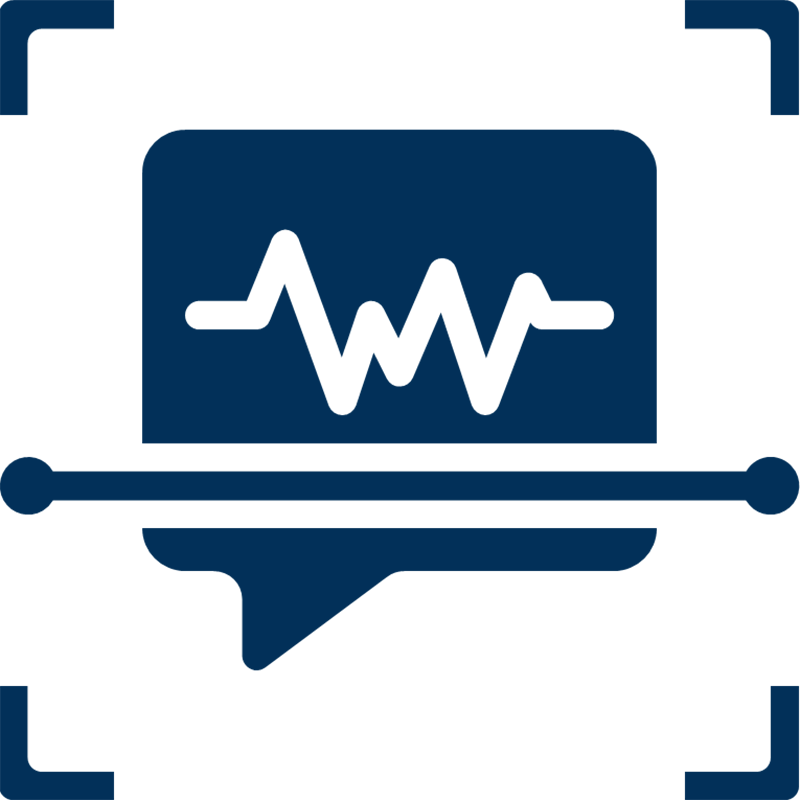Use Cases.
Our use case database tracks 133 use cases in the global enterprise technology ecosystem.
Filters allow you to explore use cases quickly and efficiently.
- (20)
- (20)
- (16)
- (10)
- (6)
- View all 9 Industries
- (20)
- (16)
- (13)
- (10)
- (7)
- View all 7 Functional Areas
- (16)
- (13)
- (11)
- (11)
- (11)
- View all 14 Enabled Capabilities
Selected Filters
133 use cases
|
Traffic Monitoring
Traffic monitoring systems use city infrastructure and vehicle Telematics systems to collect data on traffic flow. Ultrasonic sensors, video cameras, or other sensors feed live traffic data to a centralized server. The data can be used to develop applications to redirect traffic to less congested areas and provide real-time traffic updates. Further analysis on the data can be done to predict traffic density and improve road and city planning to minimize traffic congestion. An algorithm is used to predict traffic density to minimize traffic congestion.The infrastructure used in traffic monitoring can also be used for other connected car or smart city applications such as autonomous driving and emergency response. For example, RFID or UWB tags can be used to prioritize the emergency vehicles like ambulances and fire engines. In the case of emergency situations such as an explosion, fire and smoke sensors can be deployed on city infrastructure to detect hazards and re-direct traffic.
|
|
Transportation Simulation
Transportation simulation solutions model transportation systems to improve planning, design, and operations. Traffic simulation models are useful from a local and regional perspectives as they help to spot specific bottlenecks and safety issues, as well as system-wide inefficiencies. Simulation can be applied to both transportation planning and to ongoing system operations. In transportation planning the simulation models evaluate the impacts of regional urban development patterns and events such as storms on the performance of the transportation infrastructure. Regional planning organizations use these models to evaluate what-if scenarios in the region with the objective of building more efficient and sustainable transport networks. On the other hand, modeling transportation system operations focus on local issues, such as a highway corridors and bottlenecks. Lane types, signal timing and other traffic related questions can be investigated to improve local system effectiveness and efficiency. In either case, algorithsm can be used to automate scenario analysis and identify third degree impacts. In the case of operations simulation, IoT sensors can provide real-time data to create a digital twin that provides perspective into evolving events, such as storms, protests, and traffic jams.
|
|
Usage-Based Insurance
Usage-based insurance is a type of auto insurance that tracks mileage and driving behaviors. Usage-based insurance is often powered by in-vehicle Telematics technology that can be installed after-market using a plug in-device or installed in new vehicles by car manufactures. Solutions can also work via mobile applications, in which case they track a specific individual rather than the vehicle. In either can, the driver's behavior is consistently monitored, allowing insurers to more closely align actual driving behaviors with premium rates. Telematics devices measure a number of variables of interest to underwriters, including miles driven, the time of day, the location of vehicle operations, air bag deployment, and instances of rapid acceleration, hard braking, hard cornering, or other high risk driving behaviors. The level of data collected reflects the type of Telematics technology employed and the policyholders' willingness to share personal data. Insurance companies are able to more precisely list insurance premium to risk profiles by assessing regular driving behavior, rather than only looking at accident history. For example, a driver who drives long distances at a high speed and who takes sharp corners will be charged a higher rate than a driver who drives short distances at slower speeds. Premiums can collected using a variety of innovative fintech methods, including utilizing gas station pumps, debit accounts, direct billing and smart card systems.
|
|
Vehicle Performance Monitoring
Vehicle performance monitoring tracks critical driver and vehicle behaviors that affect fuel consumption, maintenance, or safety, thereby providing fleet managers and owners actionable insights into their vehicles. Monitoring devices vary in terms of data captured and cost, and may be portable or hard-wired to the vehicle. However, most units at a minimum report Global Positioning System (GPS) location history and the approximate location of stops. Additional functionality can be enabled by capturing data such as maximum speed, distance traveled, hard-braking events, check engine codes, throttle position, engine speed, and timing advance. Newer systems may also include semi-autonomous capabilities such as accident avoidance or pedestrian detection. Data are retrieved either manually by downloading the device’s stored information to a computer or through wireless technology connected to the cloud. Vehicle performance monitoring systems support fleet managers by creating and sending messages and reports that track the operational readiness of vehicles and the performance of drivers.
|
|
Vehicle Telematics
Vehicle Telematics enables the monitoring of location, movement, status, and behavior of a vehicle within a fleet. This is achieved through a combination of a GPS receiver and an electronic GSM device that is installed in each vehicle, which then communicates with the user and cloud-based software. Additional sensors and Actuators may be added to the system to enable additional functionality, such as vehicle remote control and driver status Tracking. Telematics systems provide analytics to determine the optimal route based on location and traffic information, the vehicle's condition, and operational cost prediction.
|
|
Vehicle-to-Infrastructure
Vehicle to infrastructure (V2I) is a communication framework that connects vehicles to public infrastructure to capture vehicle-generated traffic data, wirelessly sharing information between infrastructure and vehicles in order to improve safety and traffic efficiency. V2I systems are enabled by vehicle sensors, city camera systems and sensors, software applications, and bi-directional wireless communications. V2I sensors can capture infrastructure data and provide travelers with real-time advisories about such things as road conditions, traffic congestion, accidents, construction zones and parking availability. Likewise, traffic management supervision systems can use infrastructure and vehicle data to set variable speed limits and adjust traffic signal phase and timing to increase fuel economy and traffic flow.
|
|
Virtual Prototyping & Product Testing
Virtual prototyping and product testing uses simulation to build digital versions of physical products and assess the response of users early in the design cycle before products go into production. It involves using Computer-Aided Design (CAD), computer-automated design (CAutoD) and Computer-Aided Engineering (CAE) software to validate a design before committing to making a physical prototype. This is done by creating (usually 3D) computer generated geometrical shapes (parts) and either combining them into an "assembly" and testing different mechanical motions, fit and function. The assembly or individual parts could be opened in CAE software to simulate the behavior of the product in the real world. It is increasingly used as a substitute for rapid prototyping. The simulation allows designers to see design flaws and optimize features at the drawing stage. With the analysis results, designers can build better physical prototypes to confidently approach physical testing in critical areas. Virtual product testing helps meet the demands of global competition for innovative products and rapid development timelines at the best manufacturing cost. It typically takes place in a collaborative, web-based environment and gives the insight into the relationship between performance design phase. Virtual or Augmented Reality technology can be used to provide the experience of using the technology in a real life environment.
|
|
Virtual Reality
Virtual reality technology uses a computer to create a three-dimensional virtual space. It provides users with the simulation of visual, auditory and tactile senses so that users can observe things in the three-dimensional space in time and without restrictions as they experience the situation substitute human consciousness into a virtual world.Currently, the Virtual Reality can be used in manufacture, healthcare, automotive, space, military and law enforcement, and entertainment industry by providing job training or new ways of introducing an audience to a concept or experience.
|
|
Virtual Training
Virtual training refers to training done in a simulated environment using augmented, virtual, or mixed reality technology to enable participants to conduct training remotely and to avoid the cost and complexity of training in situations such as evacuating a burning building or diagnosing a jet engine. Virtual training environments are designed to allow employees to perform actions and learn in simulated operational environments. Virtual training programs act as a repository of knowledge and best teaching practices accumulated over years. This allows standardized training delivery at scale. Virtual training also reduces costs associated with the labor of experienced trainers, allows more flexible training schedules so workers can accelerate the certification process, and avoids the cost and complexity of material setups.
|
|
Visual Quality Detection
Visual quality detection automates the analysis of products on the production line or equipment in production facilities for quality control using machine vision. Machine vision is the technology and methods used to provide image-based automatic inspection. It is a system that uses visual computing technology to mechanically “see” the activities that take place one by one along the production line. The components of an automatic inspection system usually include lighting, a camera or other image acquiring device, a processor, software, and output devices. Machine vision surpasses human vision at the quantitative and qualitative measurement of a structured scene because of its speed, accuracy, and repeatability. A machine vision system can easily assess object details too small to be seen by the human eye, and inspect them with greater reliability and lesser error. On a production line, machine vision systems can inspect hundreds or thousands of parts per minute reliably and repeatedly, far exceeding the inspection capabilities of humans. It also uses Artificial Intelligence to mimick human level intelligence to distinguish anomalies, parts, and characters, while tolerating natural variations in complex patterns. It merges the adaptability of human visual inspection with the speed and reliability of a computerized system.
|
|
Voice Biometrics
Voice Biometrics are used to authenticate a speaker's identity using their voice. It is also known as voice recognition, speaker recognition, voiceprinting, and voice Authentication. Voice Biometrics identifies specific speakers rather than the words they say. Each person's voice has distinguishing characteristics determined by our anatomy and behavioral speech patterns. The shape and size of each person's mouths and throats, as well as their language, pitch and speaking patterns - fast-talking versus slow-talking - all shape their unique voices. Voice Biometrics maps a speaker’s unique characteristics and then uses the audio map for later identification. A user provides one or more audio samples, which the system analyzes to create a unique voiceprint for the speaker. Whenever the user speaks, the software compares the speaker’s voiceprint to the voiceprint on file.
|
|
Warehouse Automation
Warehouse automation is the application of specialized equipment and storage and retrieval systems to automate warehousing tasks previously handled by manual labor. Warehouse automation takes many forms, including machines and robots that aid workers with processes related to inventory handling, sensors that track goods, and software that automates record keeping. Leveraging warehouse automation solutions can help warehouses increase productivity, improve the accuracy of inventory records, reduce labor costs, and improve safety.
|
|
Water Utility Management
Water utility management systems monitor and collect data on the infrastructure used to store and deliver water to improve the efficiency of water delivery to customers. Aging infrastructure means that the vast majority of the reticulation network that delivers water to customers have been invisible to the utility company. By placing IoT sensors on water utility infrastructure, the utility operator can collect data on the water flowing between the different points to detect leakages, shortages, quality levels, and consumption levels. Sensors can also assess the condition of infrastructure to enable preventative and Predictive Maintenance.
|

















